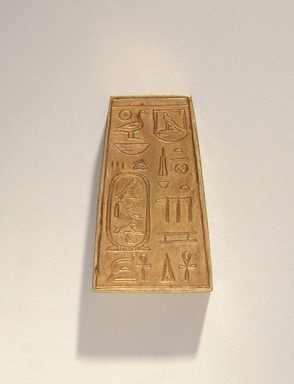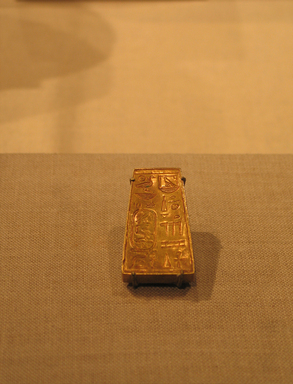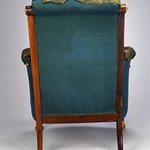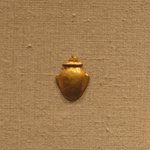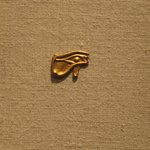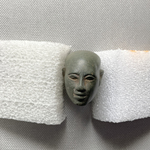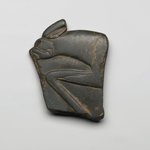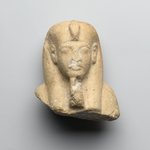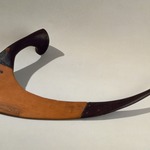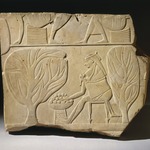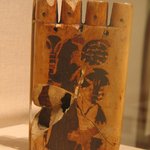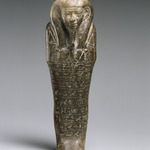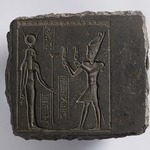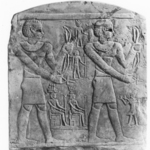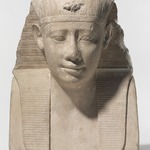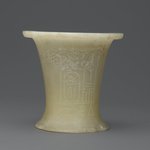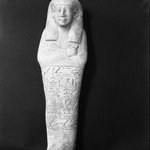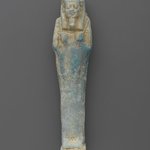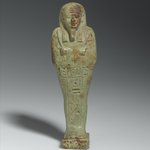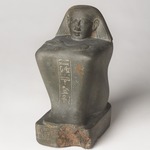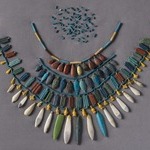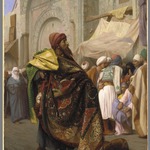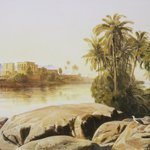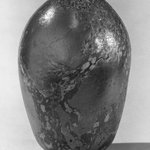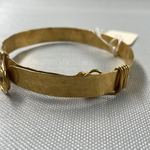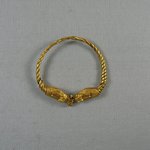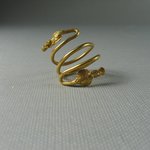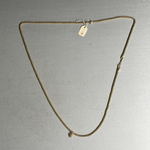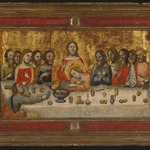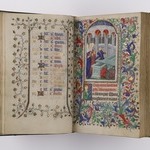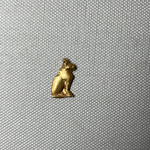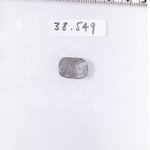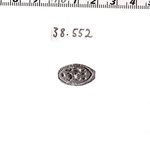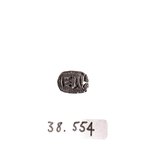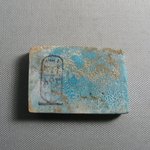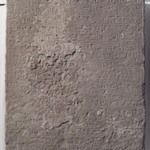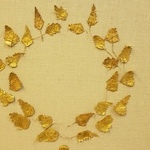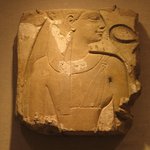Necklace Spacer
Egyptian, Classical, Ancient Near Eastern Art
Throughout Egyptian history, Kush was fabled for its gold and other resources. Despite the small size of this necklace spacer, it demonstrates well the master craftsmanship of Kushite artisans. Each side has seven holes, through which as many strands of a necklace were threaded to prevent them from tangling. The owner may have been the Kushite king Aramatelqo or one of his courtiers. Aramatelqo was one of the Kushite kings who never ruled Egypt and yet adopted much of Egyptian culture. The inscription is in hieroglyphs; Aramatelqo's names are in cartouches, and the grammar and the phraseology are completely Egyptian. On one side, the inscription reads, "Son of Re, the lord of diadems, Aramatelqo, living forever, beloved of Hathor, lady of Heliopolis, mistress of the gods, given/giver of life." The text on the other side reads, "The king of Upper and Lower Egypt, Wadjkare, living forever, beloved of Re-Horakhty, the great god, the lord of heaven, given/giver of life forever. "
MEDIUM
Sheet gold
DATES
ca. 568–555 B.C.E.
PERIOD
Napatan Period
DIMENSIONS
1 13/16 x 1 1/8 x 3/8 in. (4.6 x 2.8 x 0.9 cm)
Weight: 0.07 oz.
(show scale)
ACCESSION NUMBER
49.29
CREDIT LINE
Charles Edwin Wilbour Fund
PROVENANCE
Chamber under royal palace building no. 294, Meroë, Nubia (now Sudan); by 1911, excavated by John Garstang of Liverpool, England; ca. 1914, acquired from John Garstang by William MacGregor of Liverpool; July 5, 1922, purchased at Sotheby's London, "The MacGregor Collection of Egyptian Antiquities", lot 1502, by M. Permain; between 1922 and 1940, provenance not yet documented; before 1940, acquired by William Randolph Hearst; October 30, 1940, purchased from William Randolph Hearst at International Studio Art Corp, by Joseph Brummer of New York, NY; February 26, 1948, purchased from the estate of Joseph Brummer by Alastair Bradley Martin; 1949, purchased from Alastair Bradley Martin by the Brooklyn Museum.
Provenance FAQ
CATALOGUE DESCRIPTION
Sheet gold space bead, shape of a truncated pyramid. Long sides inscribed with incised nomen, prenomen and epithets of King Aramatelqo. Short sides undecorated and pierced with seven circular openings for insertion of necklace strands. Interior hollow.
Condition: Intact.
MUSEUM LOCATION
This item is not on view
CAPTION
Nubian. Necklace Spacer, ca. 568–555 B.C.E. Sheet gold, 1 13/16 x 1 1/8 x 3/8 in. (4.6 x 2.8 x 0.9 cm). Brooklyn Museum, Charles Edwin Wilbour Fund, 49.29. Creative Commons-BY (Photo: Brooklyn Museum, 49.29_SL1.jpg)
IMAGE
overall, 49.29_SL1.jpg. Brooklyn Museum photograph
"CUR" at the beginning of an image file name means that the image was created by a curatorial staff member. These study images may be digital point-and-shoot photographs, when we don\'t yet have high-quality studio photography, or they may be scans of older negatives, slides, or photographic prints, providing historical documentation of the object.
RIGHTS STATEMENT
Creative Commons-BY
You may download and use Brooklyn Museum images of this three-dimensional work in accordance with a
Creative Commons license. Fair use, as understood under the United States Copyright Act, may also apply.
Please include caption information from this page and credit the Brooklyn Museum. If you need a high resolution file, please fill out our online
application form (charges apply).
For further information about copyright, we recommend resources at the
United States Library of Congress,
Cornell University,
Copyright and Cultural Institutions: Guidelines for U.S. Libraries, Archives, and Museums, and
Copyright Watch.
For more information about the Museum's rights project, including how rights types are assigned, please see our
blog posts on copyright.
If you have any information regarding this work and rights to it, please contact
copyright@brooklynmuseum.org.
RECORD COMPLETENESS
Not every record you will find here is complete. More information is available for some works than for others, and some entries have been updated more recently. Records are frequently reviewed and revised, and
we welcome any additional information you might have.
Could you translate this for me, please?
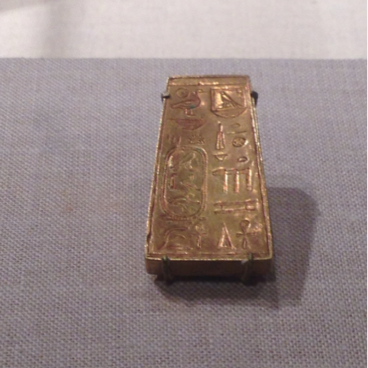
Yes, the inscription is all in hieroglyphs and the king Arametelqo's name is located in the "cartouche" -- the oval with symbols inside of it on the left side of the object in the photo you sent me. We do have the inscription. One side reads, "Son of Re, the lord of diadems, Aramatelqo, living forever, beloved of Hathor, lady of Heliopolis, mistress of the gods, given/giver of life." And the other says, "The king of Upper and Lower Egypt, Wadjkare, living forever, beloved of Re-Horakhty, the great god, the lord of heaven, given/giver of life forever."
